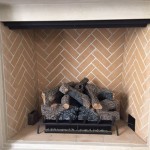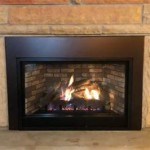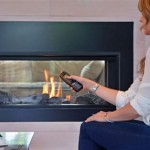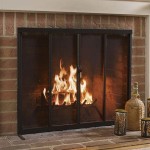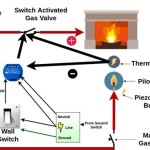Replacing the Thermocouple in Your Gas Log Fireplace
A gas log fireplace provides warmth and ambiance to a home, offering a convenient alternative to traditional wood-burning fireplaces. However, like any mechanical system, components can fail over time, and one of the most common issues is a malfunctioning thermocouple. This article will delve into the function of a thermocouple, the symptoms of a failing thermocouple, the tools and steps involved in its replacement, and crucial safety considerations.
The thermocouple is a safety device essential for the proper operation of a gas log fireplace. It’s a small, bimetallic sensor that generates a tiny electrical current. This current is what keeps the gas valve open, allowing gas to flow to the pilot light and the main burner. Without a functioning thermocouple, the gas valve will automatically shut off, extinguishing the pilot light and preventing the fireplace from operating.
Understanding the Function of a Thermocouple
The fundamental principle behind a thermocouple is the Seebeck effect. When two dissimilar metals are joined at two points and the junctions are at different temperatures, a voltage is produced. In a gas fireplace, one junction of the thermocouple is heated by the pilot light flame. This heat generates the millivolt signal that the gas valve requires to remain open. The gas valve is essentially a solenoid that is held open by this very small electrical current. When the pilot light is extinguished, the thermocouple cools, the electrical signal drops, and the gas valve shuts off, preventing unburnt gas from accumulating.
Different types of thermocouples exist, designed for specific gas fireplace models and BTU (British Thermal Unit) outputs. It’s crucial to select a replacement thermocouple that is compatible with the fireplace's make and model. Using the wrong type of thermocouple can result in improper operation or even a safety hazard. The length of the thermocouple is also critical, ensuring that it properly reaches and is positioned within the pilot light flame.
The positioning of the thermocouple within the pilot flame is also paramount to its proper functioning. The tip of the thermocouple needs to be consistently enveloped by the flame. If the flame is too small, unstable, or not directly hitting the thermocouple, the generated voltage may be insufficient to keep the gas valve open. This can lead to the pilot light repeatedly going out, a frequent indicator of a failing or improperly positioned thermocouple.
Recognizing a Failing Thermocouple
The most common symptom of a failing thermocouple is the inability to keep the pilot light lit. You may be able to light the pilot light, but it will extinguish as soon as you release the control knob. This happens because the thermocouple is not generating enough voltage to keep the gas valve open. In other cases, the pilot light may stay lit for a short period and then go out intermittently.
Another sign could be a weak or inconsistent pilot light flame. While a weak flame can be caused by other issues, such as a clogged pilot orifice, it can also indicate a failing thermocouple that is not providing sufficient power to the gas valve. If the pilot light flame flickers or appears orange or yellow instead of a steady blue, this may also point to a problem.
Sometimes, the thermocouple itself may show visible signs of damage. Look for corrosion, cracks, or bends in the metal. These defects can impair the thermocouple's ability to generate electricity and will necessitate replacement. However, a thermocouple can also fail internally without any visible external damage.
Before assuming the thermocouple is the culprit, it's wise to eliminate other potential causes for a pilot light that won't stay lit. These include a dirty pilot orifice, a malfunctioning gas valve, or a problem with the gas supply. Cleaning the pilot orifice is a relatively simple task that can often resolve the issue.
Replacing the Thermocouple: A Step-by-Step Guide
Replacing a thermocouple in a gas log fireplace is a task that can be undertaken by a homeowner with basic mechanical skills and tools. However, safety should always be the top priority. If there is any doubt about your ability to perform the replacement safely, it is best to consult a qualified gas fireplace technician.
Before beginning any work on the gas fireplace, it's imperative to turn off the gas supply. Locate the gas shutoff valve, typically located near the fireplace or at the gas meter, and turn it to the "off" position. Wait a few minutes to allow any residual gas to dissipate before proceeding.
Gather the necessary tools for the job. These usually include: a new thermocouple (ensure it's the correct type and length for the fireplace model), adjustable wrenches, a screwdriver (usually a Phillips head), a wire brush, and a flashlight. Having a pair of pliers might also be helpful.
Access the compartment where the gas valve and pilot light assembly are located. This usually involves removing a front panel or grate from the fireplace. Consult the fireplace's owner's manual for specific instructions on how to access this area.
Locate the thermocouple. It's a thin metal rod that extends from the gas valve to the pilot light assembly and sits within the pilot light flame. Note how it's connected to both the gas valve and the pilot light assembly. Take a picture for reference if necessary.
Using an adjustable wrench, carefully loosen the connection where the thermocouple screws into the gas valve. Be gentle and avoid over-tightening or stripping the threads. Once the connection is loose, unscrew the thermocouple completely.
Next, disconnect the thermocouple from the pilot light assembly. This connection may be a simple clip or a screw. Again, be careful not to damage any of the components. Once disconnected, remove the old thermocouple.
Before installing the new thermocouple, clean the pilot light assembly and the area where the thermocouple connects to the gas valve. Use a wire brush to remove any corrosion or debris. This will ensure a good connection and proper operation.
Install the new thermocouple, connecting it first to the pilot light assembly. Secure the connection according to the original configuration. Then, carefully screw the other end of the thermocouple into the gas valve. Gently tighten the connection with an adjustable wrench, being careful not to over-tighten. The connection should be snug, but not so tight that it strips the threads.
Once the new thermocouple is installed, turn the gas supply back on. Follow the manufacturer's instructions for lighting the pilot light. Typically, this involves holding down the control knob and pressing the igniter button until the pilot light ignites. Continue to hold the control knob down for about 30 seconds to allow the thermocouple to heat up and generate sufficient voltage. After 30 seconds, release the control knob. The pilot light should remain lit.
Observe the pilot light flame for several minutes to ensure it is burning steadily and consistently. If the pilot light goes out, repeat the lighting procedure. If it continues to go out, double-check the connections of the thermocouple, ensure the pilot orifice is clean, and verify the thermocouple is correctly positioned within the pilot flame.
If the pilot light stays lit, turn on the main burner and observe the operation of the fireplace. Ensure the burner ignites smoothly and burns with a steady flame. If everything appears to be working correctly, reassemble the fireplace by replacing the front panel or grate.
After completing the replacement and reassembling the fireplace, it is advisable to test the operation of the fireplace over several cycles to ensure the problem has been resolved and that the fireplace is operating safely and efficiently. If any issues persist, consider consulting a qualified gas fireplace technician.
Essential Safety Considerations
Working with gas appliances always involves inherent risks. Before undertaking any repair or maintenance on a gas log fireplace, it is paramount to prioritize safety. The most important step is to always turn off the gas supply before starting any work. Failure to do so could result in a gas leak and a potential explosion or fire.
If you smell gas at any time during the repair process, immediately turn off the gas supply, ventilate the area, and evacuate the premises. Contact the gas company or a qualified gas professional to investigate the leak before attempting to relight the fireplace.
Always use the correct type of thermocouple specified for your gas fireplace model. Using an incorrect thermocouple can lead to improper operation and potentially dangerous conditions. Refer to the fireplace's owner's manual or contact the manufacturer to ensure you are using the appropriate replacement part.
When tightening the connections on the thermocouple, avoid over-tightening. Over-tightening can damage the threads on the gas valve or the thermocouple itself, leading to leaks or future problems. Use a gentle, steady pressure to tighten the connections until they are snug but not excessively tight.
If you are not comfortable working with gas appliances or are unsure about any aspect of the thermocouple replacement process, it is always best to consult a qualified gas fireplace technician. A professional has the knowledge, experience, and tools to perform the repair safely and effectively.

Gas Fireplace Won T Stay Lit Magic Touch Mechanical

Identifying Gas Fireplace Parts Www Mygasfireplacerepair Com

Gas Fireplace Won T Stay Lit Magic Touch Mechanical

Thermo Thermopiles Friendly Fires

Propane Gas Log Manual Control Pilot Light Assembly Fine S

Thermo Thermopiles Friendly Fires

Fireplace Won T Stay Lit This Is How You Fix It

Natural Gas Logs Millivolt Pilot Light Assembly Fine S

Gas Fireplace Missing Thermopile

Fireplace Pilot Light Not Working Replacing Thermocouple On A Remote Gas Very Easy

